Nvidia Shield TV (2017) Review
Nvidia Shield TV (2017) Review
What is the Shield TV? For many, Android TV boxes are a hard sell, as pretty much every new TV has its own suite of streaming apps pre-installed. This is the reason the original Nvidia Shield TV was such a welcome surprise. The box offered top-end hardware, a variety of video apps, 4K streaming, plus […]
Verdict
Pros
- Small, compact design
- Controller and remote included
- 4K and HDR support
- GeForce Now cloud streaming is great
- Best TV box for gaming
Cons
- Smart home function aren't available yet
- Not a huge step forward from the last version
Key Specifications
- Review Price: £189.00
- HDMI 2.0, twin USB 3.0 and Ethernet ports
- Nvdia Tegra X1 CPU
- 4K, HDR playback
- GeForce Now
- Google Assistant support
What is the Shield TV?
For many, Android TV boxes are a hard sell, as pretty much every new TV has its own suite of streaming apps pre-installed. This is the reason the original Nvidia Shield TV was such a welcome surprise.
The box offered top-end hardware, a variety of video apps, 4K streaming, plus access to the Nvidia GeForce Now gaming library. This made it a compelling choice for anyone looking for an affordable entertainment hub.
With the latest version, Nvidia has chosen not to rock the boat too much with its follow-up; it’s a refined, rather than reimagined, device. Now on Shield Experience Upgrade 7.0 Nvidia enlists Android Oreo, making the interface more customisable.
The end result may look underwhelming, but after some time with it, I can confirm the upgrades are awesome and definitely make the Shield TV one of the better streaming packages around.
Video: Shield TV review
Shield TV – Design and controller
On paper, the new Shield is technically almost identical to its predecessor. It’s powered by the same Nvidia Tegra X1 processor and an identical configuration of power, HDMI 2.0, twin USB 3.0 and Ethernet ports.
The appearance of the X1 system-on-chip will annoy spec-heads expecting the device to run Nvidia’s fabled X2 follow-up, but for now the X1 chip is more than powerful enough. Nvidia claims the CPU/GPU combination makes the Shield four times faster than the Fire TV, and in terms of functionality, it still ticks all the right boxes.
The X1 is the same system-on-chip as that seen in the Nintendo Switch. It’s based on Nvidia’s slightly old Maxwell architecture, but is capable of 4K HDR playback at 60fps. Unless you’re planning on upgrading to a TV with HDMI 2.1 later this year, this is as good as you’re going to get out of a streaming box.
The company has also managed to pack the hardware into a significantly smaller chassis, nearly a third smaller than the original, which is an impressive feat. My only concern is that Nvidia has cut the microSD card slot from the design, which will prove a pain for those who buy the basic 16GB Shield and want to download, not stream, video content.
Most people in the UK will be limited to the 16GB version, with the 500GB model exceptionally hard to track down. Fortunately, you can expand storage via a USB drive, although this isn’t as neat as plugging in a memory card.
Related: What is 4K?
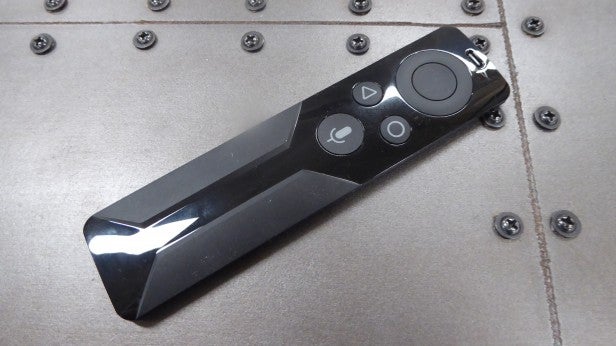
The games controller and remote have received a more thorough redesign. For starters, they’re now included with the console. The 2015 edition only shipped with the controller.
Visually, the new version of the controller looks like a cross between an Nvidia Founder’s Edition graphics card and Xbox One pad. Personally, I’m not a big fan of the angular design, which feels a little less comfortable to hold than its predecessor. However, I am pleased with its under-the-hood hardware upgrades.
Haptic feedback was woefully absent from the original controller, which made gaming feel slightly less immersive – which is why I’m pleased to see it on the 2017 pad. The addition of an IR transmitter is another nice touch, meaning you can now change the volume on your TV using the gamepad.
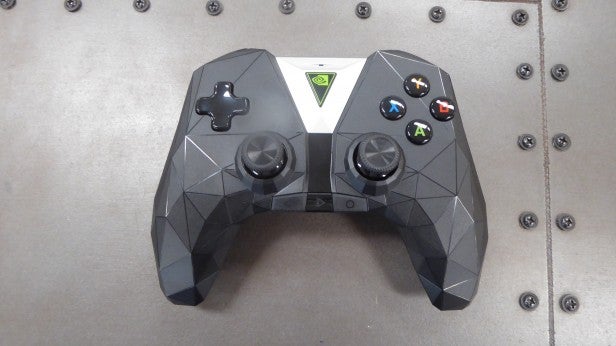
For me, it’s the improvements to the controller’s microphone that are key. Nvidia has tweaked the mic so it can pick up voices from a wider field. This may sound small fry, but it’s necessary for one of the Shield TV’s best new features: Google Assistant.
Shield TV – Google Assistant
Assistant is Google’s version of Amazon Alexa, and is designed to let you control smart devices via your voice. Its addition means you can now mount web searches and control apps running on the Shield TV simply by saying “OK Google” followed by your command when near your controller.
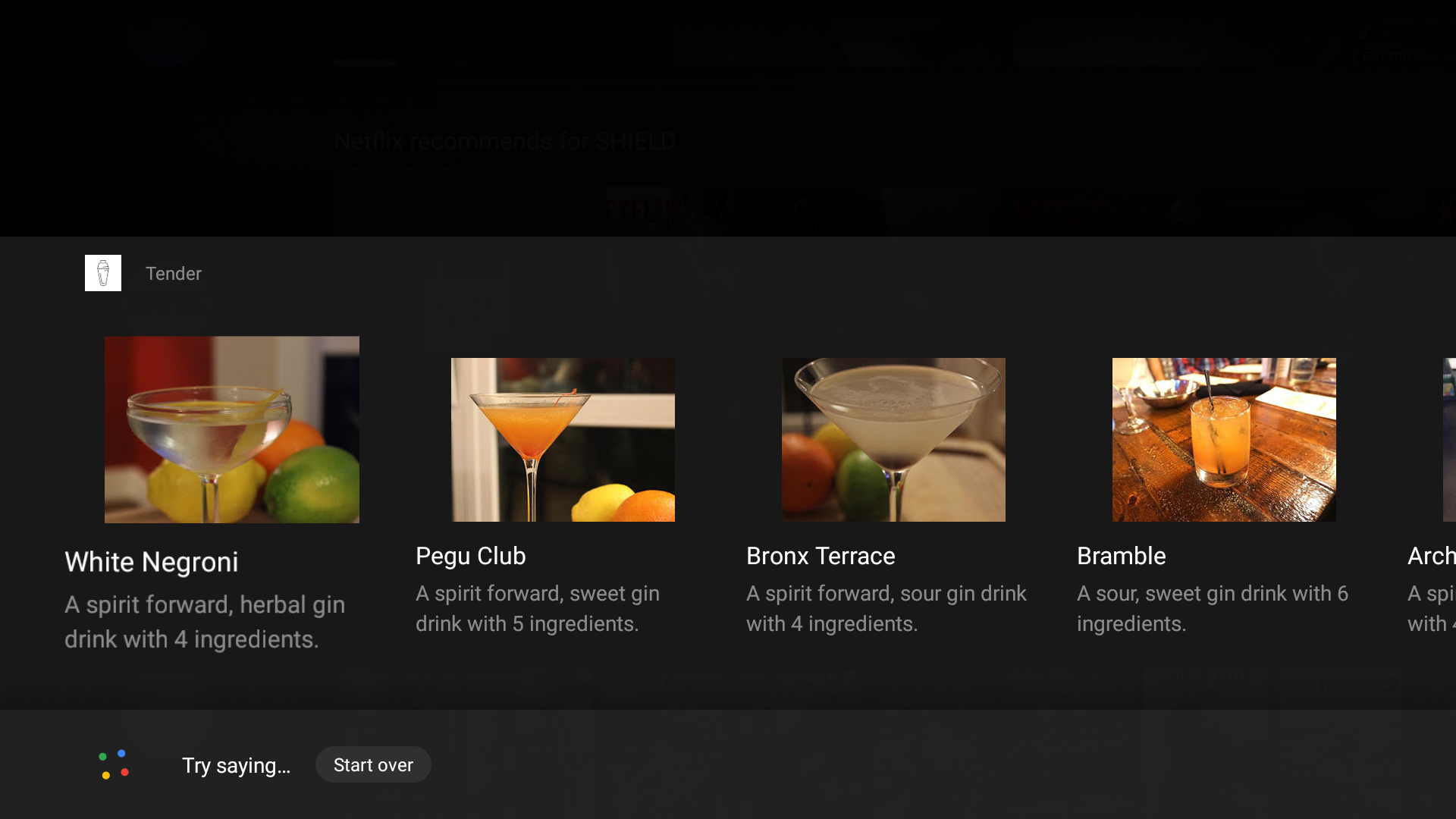
The feature worked a treat during my time with the Shield. I found its voice recognition to be more sensitive and accurate than the Kinect 2’s, but slightly behind the Amazon Echo’s. The mic easily picked up simple commands such as “pause”, “play” and “next track”, but it would occasionally stumble with more esoteric queries. Trying to search for VeltPunch albums in the Google Play store lead to some inaccurate results, for example.
You can also activate the Google Assistant by using the Shield Remote’s microphone button. Arguably, this gives better results, as you tend to hold the remote closer to your mouth. It’s similar to using Alexa on a more recent Amazon Fire TV device.
The Google Assistant has improved over the years, and is now a fully fledged smart home controller. Using the Google Home app on your smartphone, you can hook up supported lights, thermostats and more, and control them from the Shield. I had no problem toggling my Hue lights on or off, or changing the temperature on my Nest thermostat. Since the Shield is a full-on Chromecast device, too, you can use any compatible video devices with it. I soon had my Nest cameras streaming directly to the Shield, with the footage displayed on my TV.
The Shield can do practically everything else that the Google Home can do. The one limitation is that you can’t make phone calls with it; that seems fair to me, as trying to speak into the remote or controller would be beyond fiddly.
At the Shield launch, Nvidia promised better smart home control. First, the Spot was announced, which is Nvidia’s answer to the Amazon Echo Dot. It’s a small smart speaker that plugs into any wall socket. Once plugged in, it enables you to continue using Google Assistant when away from the Shield. But we’re still waiting for it.
Likewise, the Samsung SmartThings Link has been launched in the US, turning the Shield into a home-control hub, but there’s no sign of it in the UK. Arguably, with Google Home integration, there’s a less pressing need for either product.
Shield TV – New interface
With the Nvidia Shield Experience Upgrade 7.0, the streaming TV box now runs Android Oreo. This version of the operating system is largely less interesting than the interface tweaks it brings. The Shield’s interface was starting to look quite dated, but the new interface brings much-needed customisation.
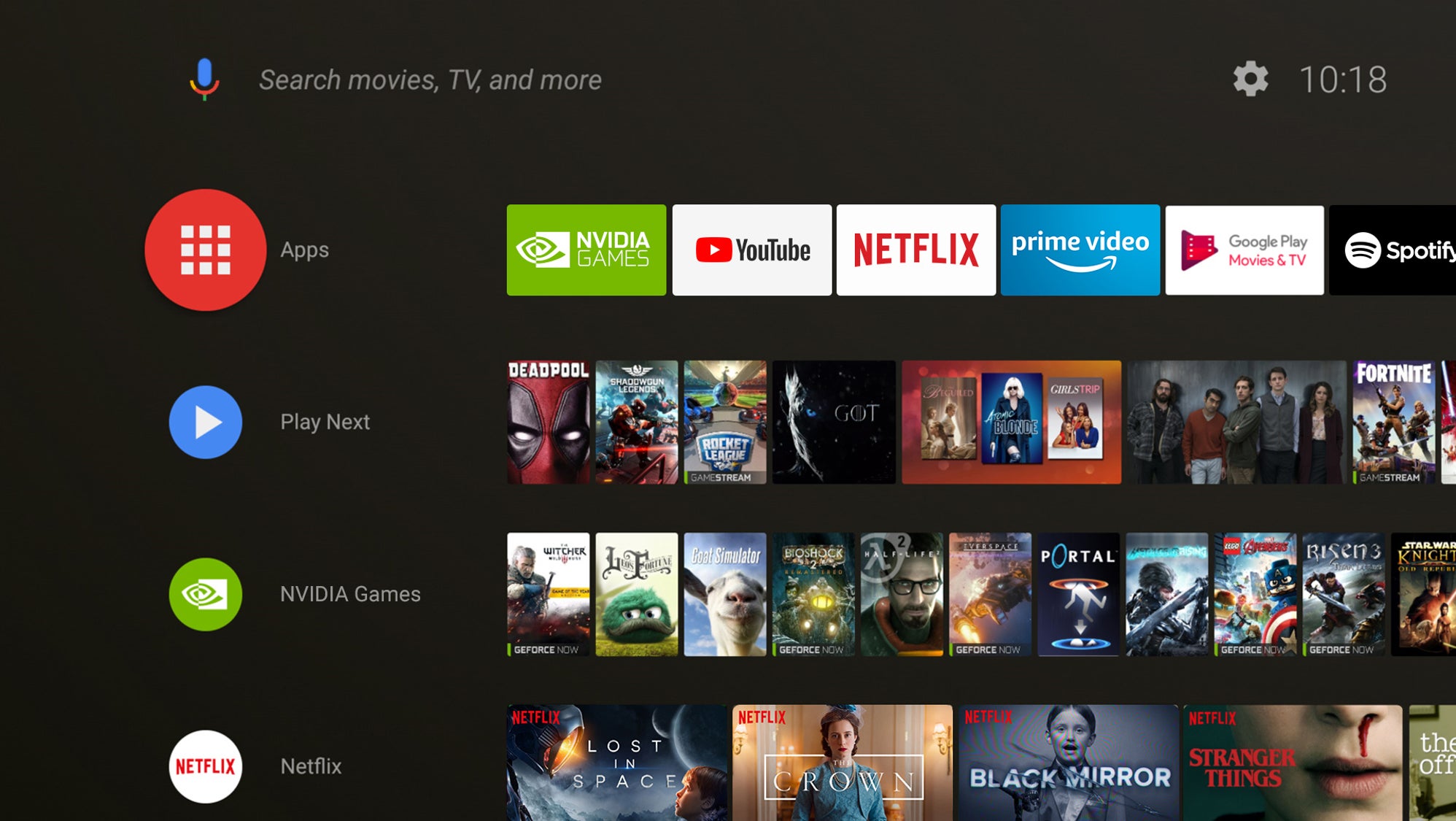
Via the top row, you get all of your favourite apps. Next is the ‘Play Next’ row, which is home to recommendations, games you’re playing and videos that you add into the list. It’s a handy way of bundling together things to watch or play from multiple services. You can add videos from practically anywhere, including YouTube, Google Play Movies and BBC iPlayer – but Netflix content isn’t supported.
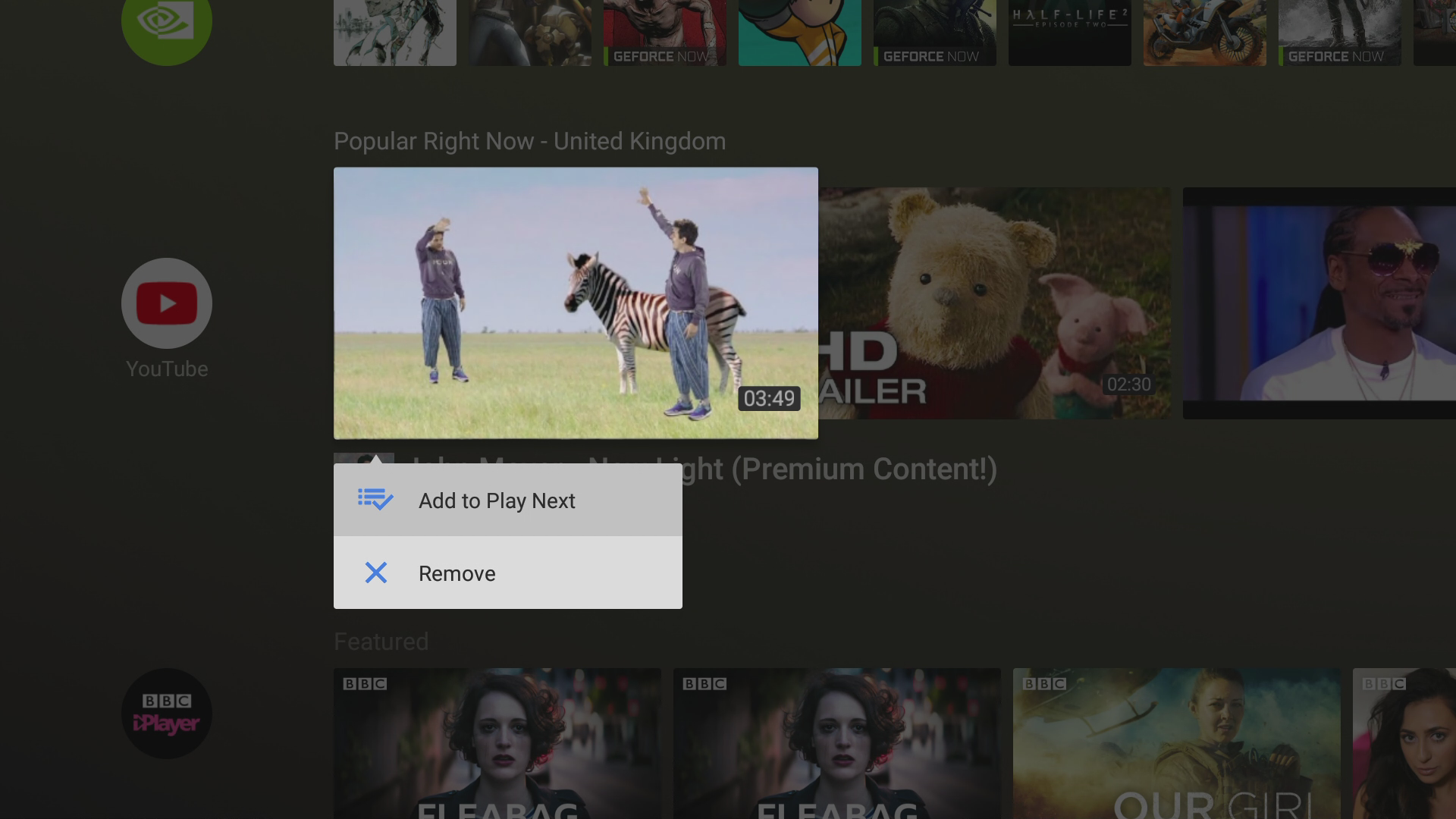
Next, you get customisable channels, which consist of recommendations and favourites from the apps you’ve installed. Select Netflix, for example, and you get a list of shows that you can watch.
Again, it’s a neat tweak that lets you browse more content without having to launch an app. This is similar to the Apple TV’s top bar, which shows recommendations from the selected app. You can customise which Channels appear, and the order they appear in, too.
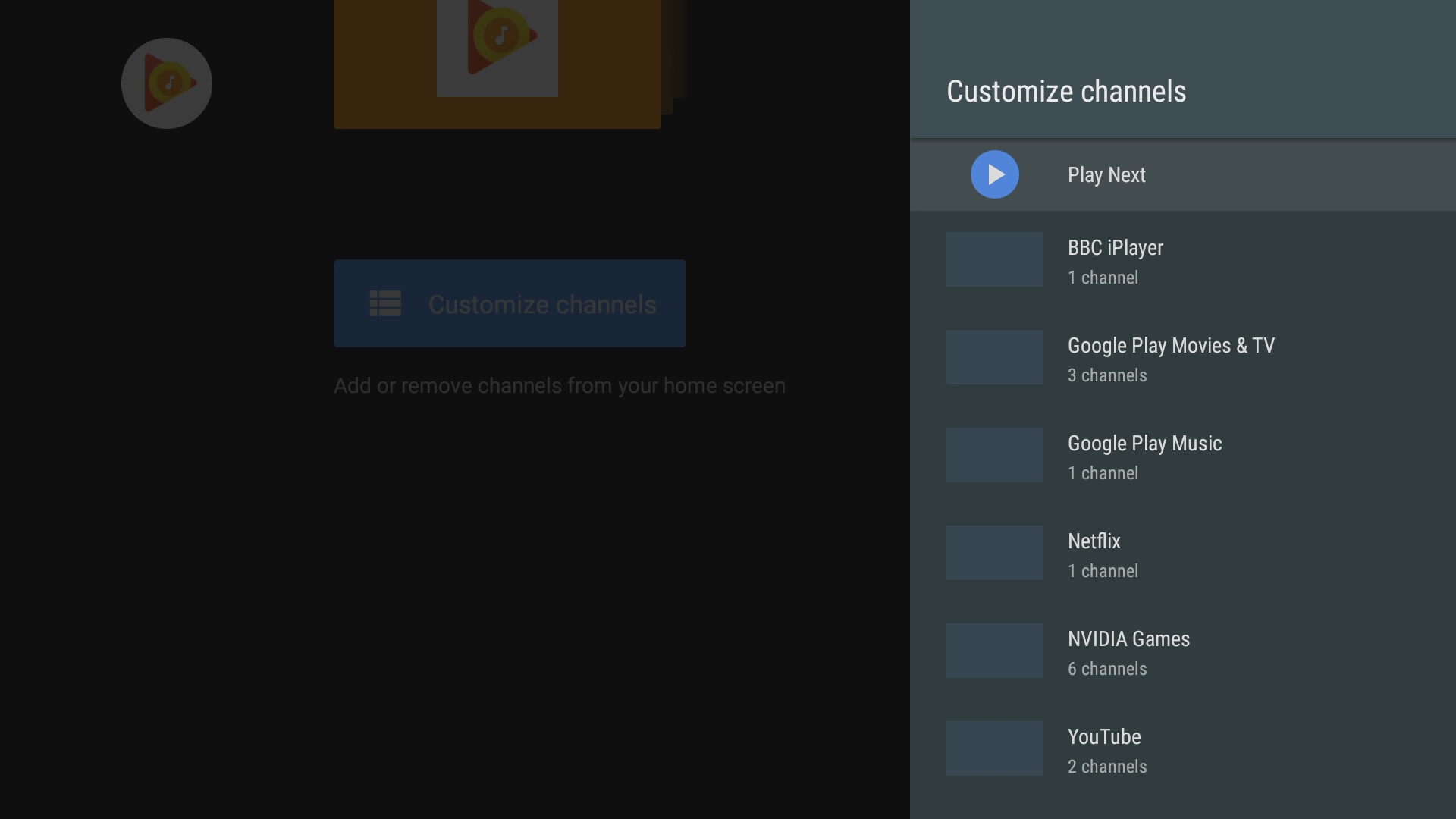
Shield TV 2 – GeForce Now and GameStream
When Nvidia unveiled the Shield, it made a big deal about the huge changes it would be making to its GeForce Experience software, which is directly baked into the streaming box.
The three biggest upgrades included a performance boost to Nvidia’s GeForce Now remote play subscription service, the ability to link your Ubisoft UPlay account to the Shield, and the GameStream option that lets you stream games from your PC.
Nvidia claims the new GeForce Now software will let you stream titles at a graphics quality equivalent to a desktop PC running either a GTX 1080 GPU.
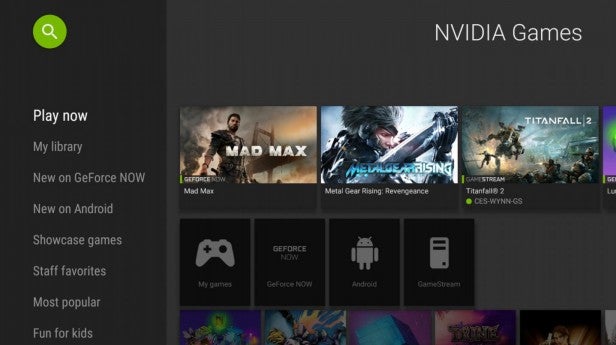
The UPlay upgrade means Shield owners will be able to stream games – such as Assassin’s Creed Syndicate, The Division, Far Cry Primal, Watch Dogs, Watch Dogs 2, For Honor, and The Crew – from their Ubisoft library, from the moment they’re released on PC. UPlay may not be the best store, but if this functionality carried on rolling out to other stores, such as EA’s Origin, or even Steam, it would make the Shield a great choice for gamers regularly on the move.
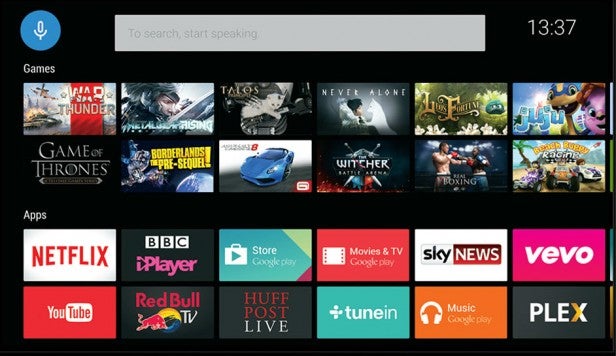
The Nvidia Store’s existing gaming ecosystem is noticeably more developed than competing streaming boxes. The number of titles isn’t anywhere near as large as Steam’s, but it includes some hidden gems and classics you won’t be able get on any current generation console.
Scrolling through the library I was able to quickly find a number of retro games I’ve been hankering to replay – such as Jade Empire, pretty much all the Final Fantasies and Fear 2. Newer titles are a still a bit of a mixed bag, however; you’ll find some new titles such as Shadow Warrior 2, but most games released within the past few months are noticeably absent.
The gaming experience itself is great. Games easily streamed on my BT Infinity Broadband connection and I didn’t suffer any serious drops in frame rate or network errors during my time with the Shield TV. Downloading games is a little tricky on the 16GB model, since there isn’t enough space to get most modern games, but the lower-end Android games such as Banner Saga install and ran just fine.
Related: Apple TV review
Graphically, though, games from the Android Store – which is separate from Nvidia’s own Store – are slightly less impressive. As was the case on the original Shield TV some Android games don’t upscale onto the big screen that well and can suffer from pixelation. How bad the effects are depends on the exact title you’re playing.
GameStream lets you stream your games (Steam or otherwise) from your PC, provided its running an nVidia GPU. Once the two are linked, your PC’s games appear in the list of titles to play. This is a really neat feature, and lets you take your games out of the room your computer is in.
Quality-wise, I managed to stream Dishonored 2 at 1080p. There’s a little bit of lag, but certainly not enough to spoil the enjoyment of a single-player game. But, there are some issues with the service.
First, your computer has to be turned on. If it’s on but locked then the Nvidia Shield will just show the Windows Lock Screen, so you may need a trip to your computer to unlock it before you can play. And, finally, GameStream doesn’t play nicely with all software; I had to uninstall Kaspersky Internet Security to get a connection.
Shield TV – 4K media streaming
The Shield was one of the first to offer 4K HDR viewing and is the only box to include 360 YouTube videos.
The feature works well enough and there’s a decent array of HDR 4K content available on the Shield, which has access to all the popular entertainment apps you’d expect – Netflix, Amazon Instant Video, YouTube and Google Play Movies, plus some more esoteric ones such as Crunchyroll and Shudder.
The interface is beautifully smooth, with the remote making for easy playback. As a pure media streamer, the Shield does as well, if not better, than the competition. With Chromecast built in, you can stream content directly from your phone to the Shield, too, or remote control it with a Google Home.
Related: Best 4K TVs
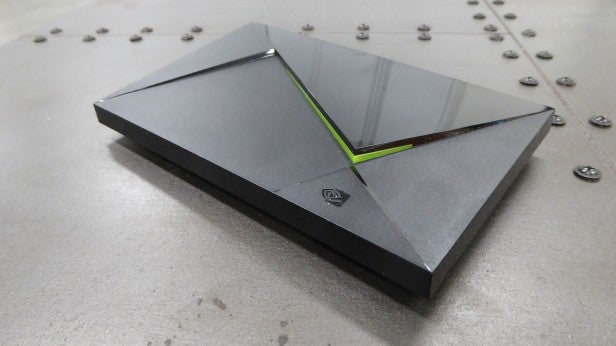
Why buy the Shield TV 2?
The Shield TV is currently the best Android TV box around. The 2017 model is noticeably faster than competing packages such as the Amazon Fire, and has a significantly better gaming portfolio. If you’re on the market for an all-in-one streaming box then this is one of the best you can buy.
I wouldn’t recommend that existing Shield TV owners rush out and buy one, however. Too many of the cool new features are either appearing on the old Shield TV anyway, or haven’t been activated on the newer model, so it doesn’t yet feel like a significant upgrade. The new controller will be worth picking up separately, though.
Current-gen games console owners might also struggle to justify the purchase, so the Shield is undeniably a niche device.
For gaming, the Shield is at its best when used in conjunction with an Nvidia gaming PC in your house, and makes streaming games from your PC to a TV in another room easy. The excellent array of apps, streaming services, HDR and exclusive games is also very attractive.
With the basic 16GB model costing a hefty £189.99 and the 500GB version retailing for £279, the new Shield TV is also one of the most expensive streaming boxes around, which is a drawback even when its features are considered.
If you want a powerful all-rounder, there’s nothing quite like it; if you just want something for media, the 4K Amazon Fire TV costs just £60 and has Alexa built in.
Verdict
The Shield TV remains the best streaming box around. Its only a shame that its best features haven’t arrived yet.


